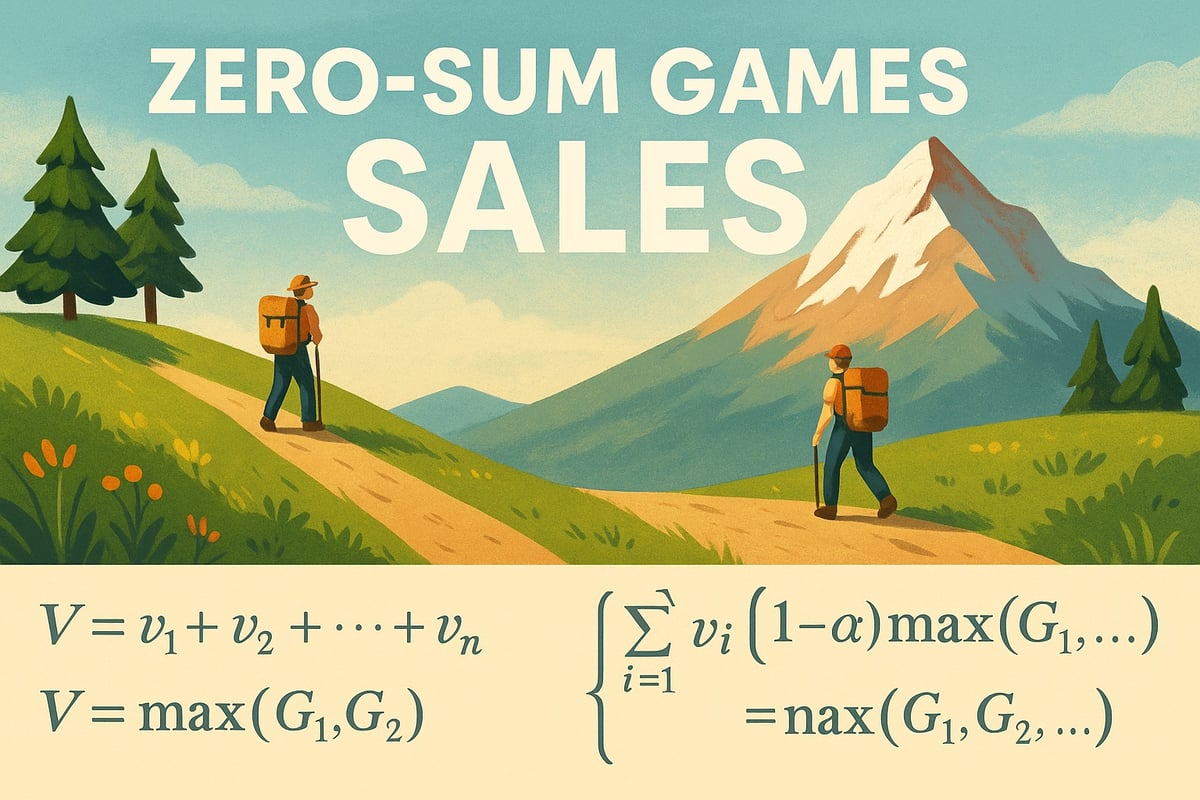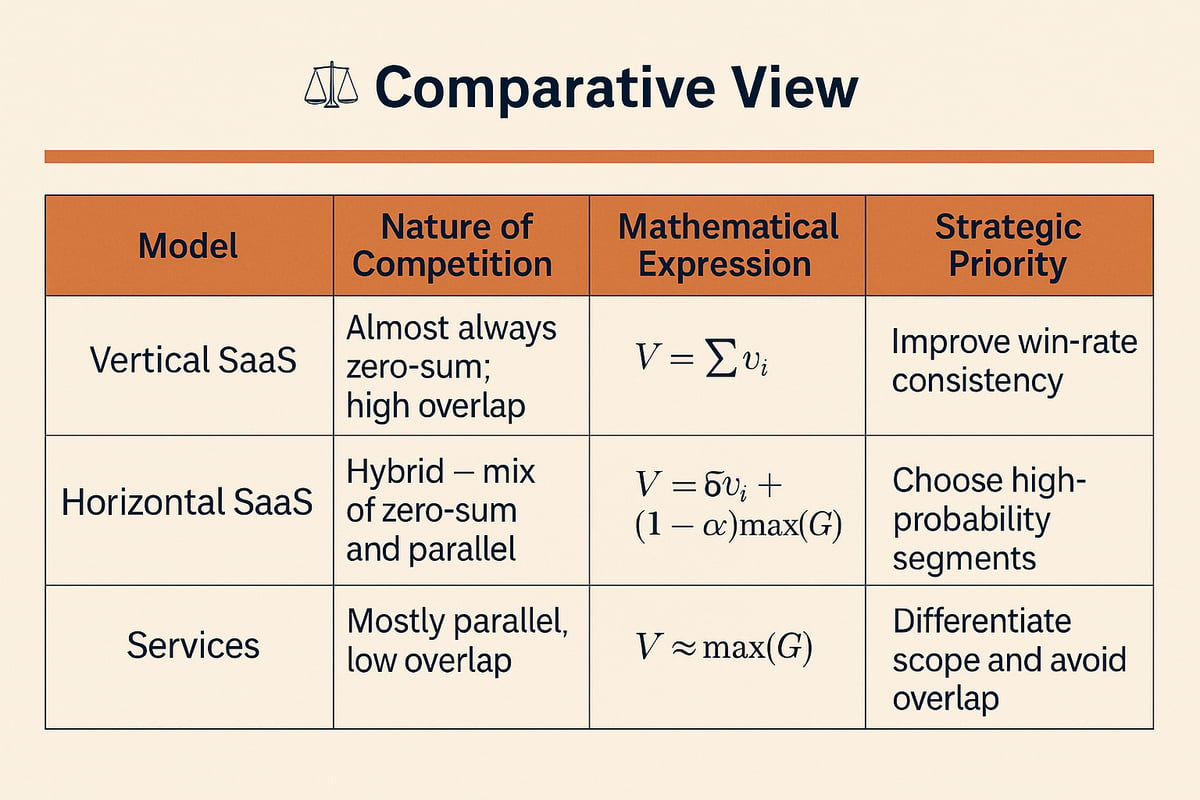
In strategic markets:
When multiple such interactions occur sequentially, the total outcome defines who captures long-term advantage.

Where:
👉 A single victory doesn’t define market leadership — consistency across multiple deals does.
Now, in parallel markets, where players can pick different lanes, the payoff shifts to:

That means success isn’t about brute-force wins; it’s about selecting the right battles — the markets, ICPs, or geographies where your probability of success is highest.
In every company, sales teams operate within invisible games. Some are repeated games (selling to similar accounts again and again), while others are parallel games (branching into new markets or ICPs).
The art of GTM strategy lies in knowing which type of game you’re playing — and when to switch the board.
Vertical SaaS companies — those serving a specific industry such as construction, logistics, or healthcare — play the purest form of the zero-sum game.
Every deal feels like a direct contest. The ICP is narrow. Customer pain points are identical. Evaluation checklists are nearly the same across vendors.
Take the construction SaaS market, for example. Two vendors might be pitching the same contractor network, using similar messaging, comparable pricing, and almost identical proof-of-concept stages.
This is the series model in action:

If one vendor wins 60% of deals and another 40%, that small difference compounds massively. Every win brings referenceability, renewal momentum, and network effects that make the next deal easier.
📊 A 5% increase in win-rate, if sustained, can shift a company’s market share trajectory entirely within 12 months.
Strategic Story: Imagine two companies — both with similar products. Company A wins a few high-value customers early, builds implementation case studies, and earns industry credibility. Company B, despite comparable technology, loses early momentum. By year two, Company A starts commanding trust, pipeline volume, and better CAC-to-LTV ratios. Both started equal — but because one played the zero-sum game slightly better, the compounding made it unstoppable.
Strategic Insight:
Horizontal SaaS spans multiple industries — collaboration tools, CRMs, analytics platforms, or cloud suites.
They operate in a hybrid world — where zero-sum battles and parallel expansion coexist.
Example:
At first glance, they don’t seem to compete directly — but strategically, they both fight for the organizational communication layer. The company that controls that workflow controls retention, integrations, and cross-product stickiness.
This dynamic creates a hybrid payoff structure:

Where:
Strategic Story: In 2019, many companies used both Slack and Teams. But over time, corporate IT leaders standardized to one — whichever ecosystem fit their strategy better. Slack didn’t lose to a better product — it lost to ecosystem gravity. Microsoft didn’t win every direct battle, but it avoided most of them by owning distribution.
That’s the key to horizontal success — not fighting everywhere.
Strategic Insight:
Services businesses — consulting, IT, engineering, or workforce solutions — operate in markets where collaboration outweighs confrontation.
Two firms can serve the same enterprise simultaneously — one doing cloud transformation, another managing support or data migration.

Unlike SaaS, where technology standardization leads to market dominance, services thrive on diversity and depth.
Strategic Story: Think of two consulting firms working with the same telecom client. One runs the AI roadmap; another handles process automation. Both win without colliding. But if both go after the same RFP with identical deliverables, the game instantly turns zero-sum.
Strategic Insight:

Every market likes to call itself a “blue ocean.” But in practice:
The math doesn’t just predict who wins — it explains why some companies keep compounding advantage while others plateau.
If you’re designing a GTM motion, ask yourself:
“Am I optimizing for a series of zero-sum wins — or am I choosing smarter, parallel lanes?”
Sales is no longer just about chasing deals — it’s about understanding the type of game you’re playing.
Find out if MentorCruise is a good fit for you – fast, free, and no pressure.
Tell us about your goals
See how mentorship compares to other options
Preview your first month
